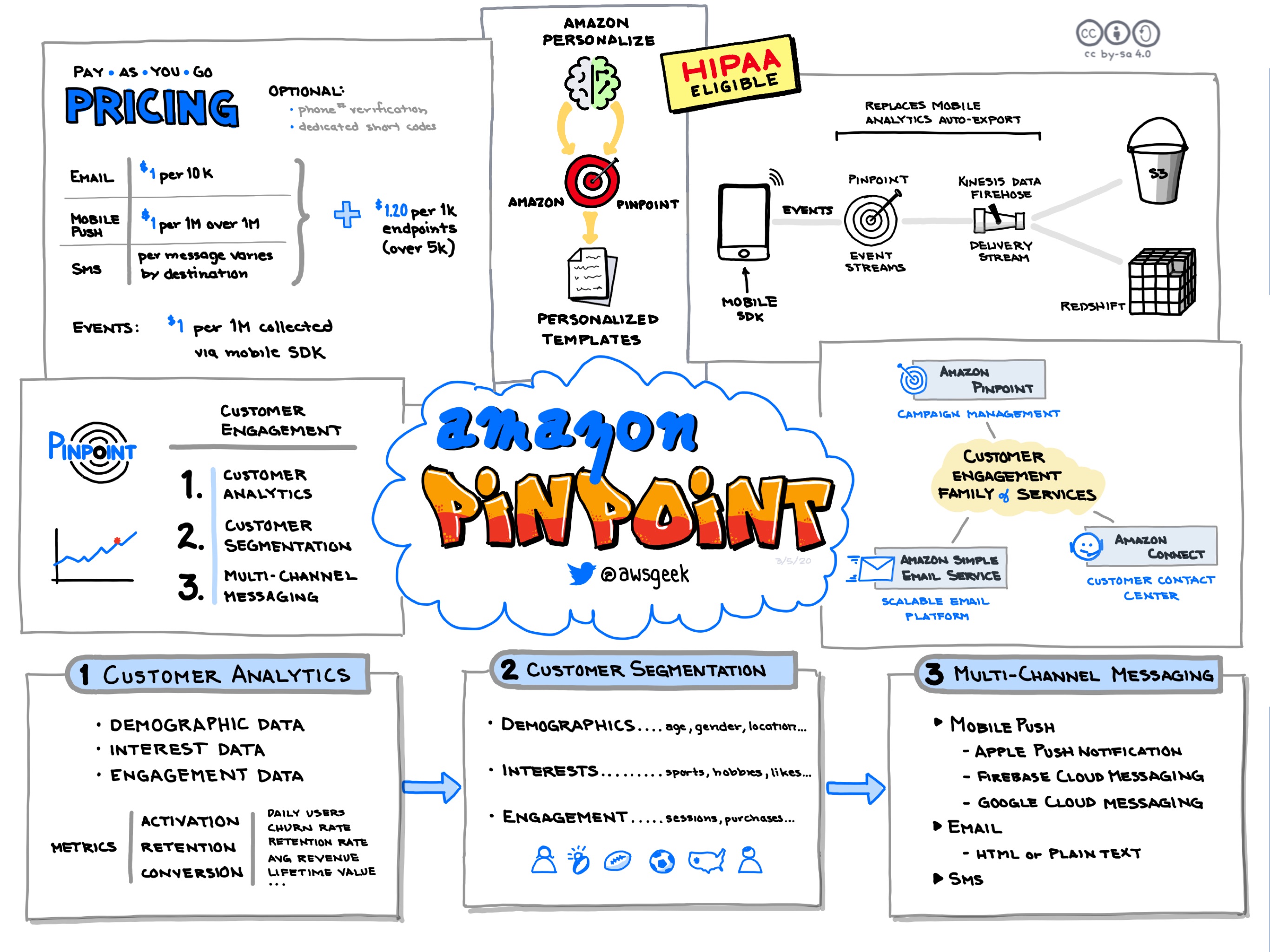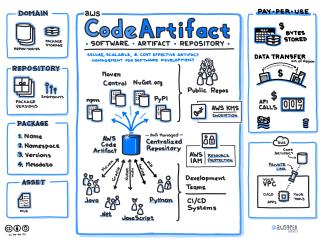
Amazon Pinpoint is a highly flexible and scalable communication platform that enables developers and IT administrators to engage with users via SMS, email, push notifications, and voice messages. It is part of AWS's suite of customer engagement tools designed for building and executing targeted campaigns, which can be automated based on user behavior and preferences. Pinpoint provides extensive features for creating, delivering, and managing messaging campaigns, while also collecting valuable analytics to fine-tune strategies for user engagement.
Use Cases
Amazon Pinoint can be employed in various scenarios to enhance customer engagement. It is particularly useful for transaction communications such as order confirmations, shipping notifications, and password resets. Pinpoint's ability to segment audiences based on user behavior makes it ideal for marketing campaigns, allowing organizations to tailor their messaging to specific customer groups. The service can automate recurring messages, helping organizations maintain regular contact with customers when new products are launched or updates are available. It also supports A/B testing, a critical feature for optimizing message content and delivery times.
Pricing
The pricing model for Amazon Pinpoint is designed to be cost-effective, based on the number of messages sent and received. There are no upfront fees, and users pay only for what they use. Costs are primarily derived from outbound messages; for example, SMS messages differ in cost depending on the destination country. Email pricing is based on the amount of data sent. Additional charges may apply if AWS services like Amazon Simple Email Service Amazon SES are used in conjunction. It is essential for users to estimate their usage properly to understand the cost implications fully.
Scalability
Scalability is a cornerstone of Amazon Pinpoint's architecture, built to handle millions of messages per day. This scalability makes it suitable for organizations of all sizes, from startups looking for rapid growth to established enterprises managing vast customer databases. Pinpoint seamlessly adapts to increasing demand due to its integration within the AWS cloud infrastructure, which automatically scales up or down based on the volume of tasks, ensuring continuous performance without manual intervention.
Availability
Amazon Pinpoint is engineered to deliver high availability, leveraging AWS's global network of data centers. It is designed to minimize downtime with multiple redundancies in place to assure message delivery. The multi-AZ (Availability Zone) approach ensures that even if one server fails, another can take its place swiftly, thereby maintaining consistent service levels. Amazon Web Services provides an SLA (Service Level Agreement) for uptime, underscoring their commitment to reliability.
Security
Security is paramount in Amazon Pinpoint's design, with multiple layers of protection to safeguard data. It supports both encryption in transit and at rest, using protocols such as HTTPS for data transfers and AWS Key Management Service (KMS) for storing sensitive data securely. Access management is facilitated through AWS Identity and Access Management IAM, allowing precise permission settings for different users. Compliance with global standards further enhances its credibility, making it a viable option for industries with stringent regulatory requirements.
Competition
Several cloud providers offer services akin to Amazon Pinpoint. Alibaba Cloud provides the Alibaba SMS Service, delivering robust capabilities for sending bulk and personalized messages to your global audience. Google Cloud offers Firebase Cloud Messaging (FCM), a cross-platform messaging solution that lets you reliably send messages at no cost. Microsoft Azure's alternative is Azure Notification Hubs, which offers scalable, cross-platform push notifications. These services differ in features and integrations, with each offering unique strengths suited to specific needs, allowing developers to choose a platform that best aligns with their project requirements.
 Amazon Personalize
Amazon Personalize
 AWS Regions
AWS Regions
 AWS Lambda
AWS Lambda
 AWS CodeArtifact
AWS CodeArtifact